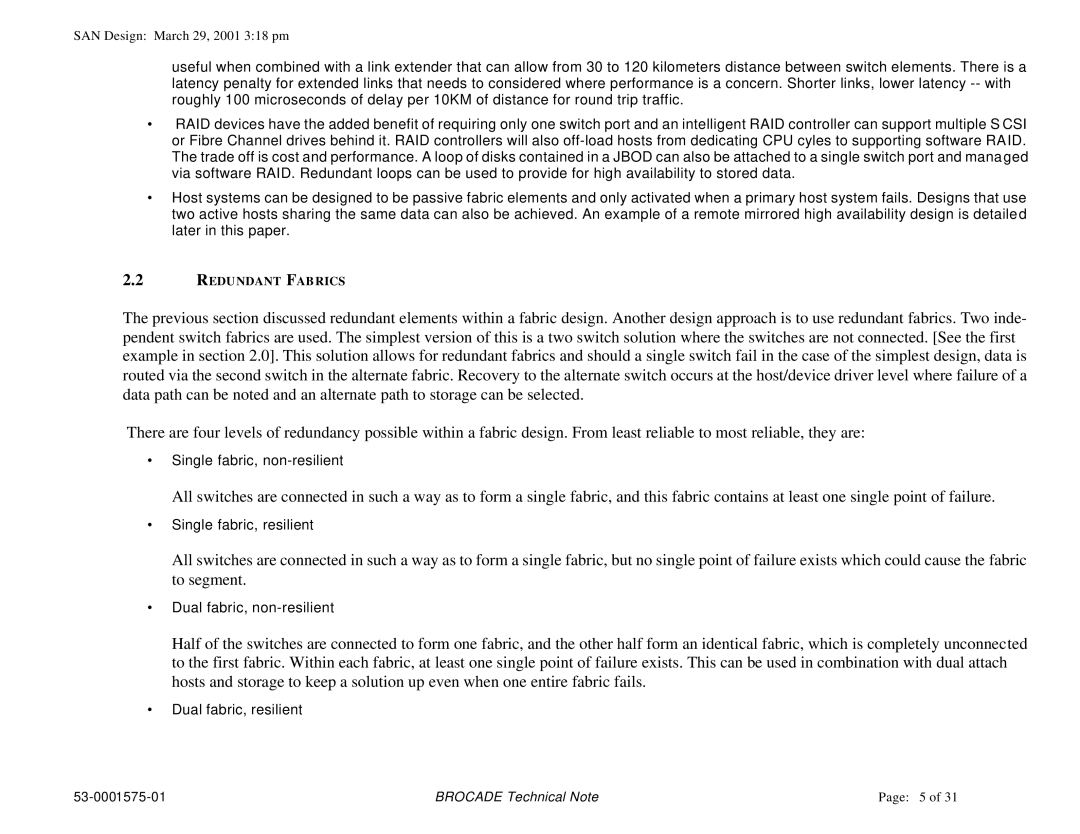SAN Design: March 29, 2001 3:18 pm
useful when combined with a link extender that can allow from 30 to 120 kilometers distance between switch elements. There is a latency penalty for extended links that needs to considered where performance is a concern. Shorter links, lower latency
•RAID devices have the added benefit of requiring only one switch port and an intelligent RAID controller can support multiple S CSI or Fibre Channel drives behind it. RAID controllers will also
•Host systems can be designed to be passive fabric elements and only activated when a primary host system fails. Designs that use two active hosts sharing the same data can also be achieved. An example of a remote mirrored high availability design is detailed later in this paper.
2.2REDU NDANT FABRICS
The previous section discussed redundant elements within a fabric design. Another design approach is to use redundant fabrics. Two inde- pendent switch fabrics are used. The simplest version of this is a two switch solution where the switches are not connected. [See the first example in section 2.0]. This solution allows for redundant fabrics and should a single switch fail in the case of the simplest design, data is routed via the second switch in the alternate fabric. Recovery to the alternate switch occurs at the host/device driver level where failure of a data path can be noted and an alternate path to storage can be selected.
There are four levels of redundancy possible within a fabric design. From least reliable to most reliable, they are:
•Single fabric, non-resilient
All switches are connected in such a way as to form a single fabric, and this fabric contains at least one single point of failure.
•Single fabric, resilient
All switches are connected in such a way as to form a single fabric, but no single point of failure exists which could cause the fabric to segment.
•Dual fabric,
Half of the switches are connected to form one fabric, and the other half form an identical fabric, which is completely unconnected to the first fabric. Within each fabric, at least one single point of failure exists. This can be used in combination with dual attach hosts and storage to keep a solution up even when one entire fabric fails.
•Dual fabric, resilient
BROCADE Technical Note | Page: 5 of 31 |
